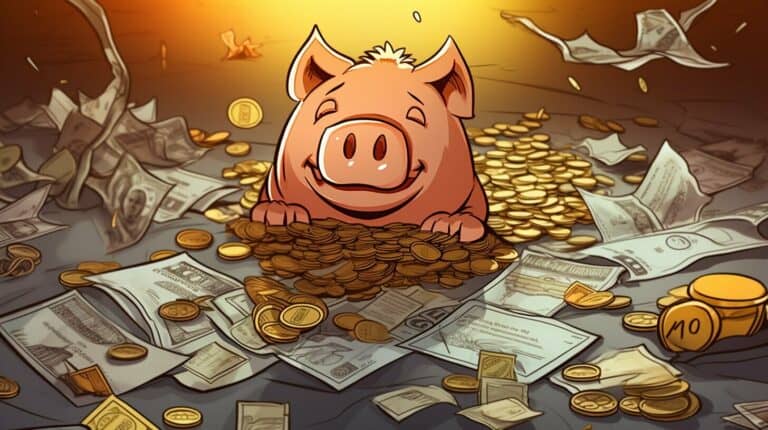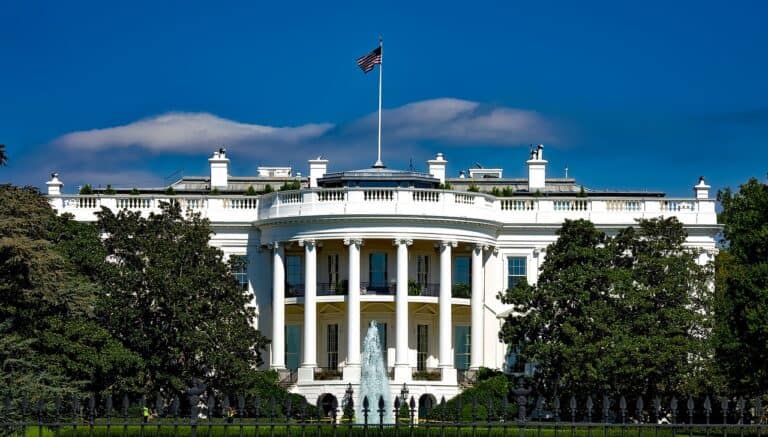How Does Silver Ira Perform In Market Downturns?
How Does Silver Ira Perform In Market Downturns?
Are you considering investing in a Silver IRA but wondering how it performs during market downturns? It’s important to understand how this type of investment works and its historical performance before making any decisions.
A Silver IRA is a self-directed individual retirement account that allows you to invest in physical silver or other precious metals. During market downturns, investors often flock to safe-haven assets like gold and silver, which can help protect their portfolios from the volatility of the stock market.
But how does a Silver IRA specifically perform during these times? In this article, we’ll take an objective and data-driven look at the historical performance of Silver IRA during market downturns, compare it with other investment options, discuss tax implications, and provide answers to frequently asked questions about this type of investment.
Secure your wealth by diversifying in precious metals through an IRA! Safeguard against inflation and global financial instability for long-term value. Act now for financial security – start your precious metals IRA today!
Key Takeaways
– Silver IRA is considered safe and secure during market downturns.
– Silver IRA outperformed many other investments during the 2008 financial crisis due to its ability to maintain value during market downturns.
– During market downturns, investors often flock to safe-haven assets like gold and silver, which can help protect their portfolios from the volatility of the stock market.
– Silver has long been considered a safe haven asset, meaning it tends to hold its value or even increase in value during times of economic uncertainty.
What is a Silver IRA?
Looking for a reliable investment option? Consider a Silver IRA, which not only offers diversification but also has the potential to protect your portfolio during market downturns.
A Silver IRA is similar to a traditional IRA, except that instead of holding stocks and bonds, it holds physical silver. This precious metal has long been considered a safe haven asset, meaning it tends to hold its value or even increase in value during times of economic uncertainty.
One advantage of a Silver IRA is that it can provide protection against inflation. Unlike paper currency, which can lose value over time due to inflation, silver has intrinsic worth and is relatively scarce.
As the demand for silver increases with economic growth and industrial use, its price tends to rise as well. This means that holding silver can help preserve your purchasing power over the long term.
However, there are also limitations of investing in a Silver IRA. For one thing, there are storage costs associated with holding physical silver. You will need to find a reputable custodian who can store your bullion securely and insure it against loss or theft.
Additionally, the price of silver can be volatile at times, so you may experience fluctuations in the value of your investment.
So now that you know what a Silver IRA is and its advantages and limitations, let’s dive into how it works in more detail.
How does a Silver IRA work?
You can easily set up a Silver IRA by opening an account with a precious metals dealer or broker that specializes in these types of investments. Once you’ve opened the account, you can choose from a variety of silver products to invest in, such as bars or coins.
The next step involves finding a reputable custodian who’ll store your silver securely and ensure that it complies with IRS regulations. Silver IRA custodians typically charge fees for their services, which can vary depending on the size of your investment and the type of storage you choose.
For example, if you opt for segregated storage (where your silver is stored separately from other investors’ assets), you may incur higher fees than if you choose allocated storage (where your silver is stored alongside other investors’ assets).
In addition to custodial fees, there are other expenses associated with investing in a Silver IRA, such as premiums over spot price when purchasing physical silver and potential taxes upon distribution. It’s important to carefully consider these costs before making any investment decisions.
Investing in physical silver through a Silver IRA can provide diversification benefits to your portfolio and potentially serve as a hedge against inflation and economic uncertainty. In the next section, we’ll explore some of the potential benefits of investing in a Silver IRA and how it may perform during market downturns.
What are the potential benefits of investing in a Silver IRA?
If diversifying your portfolio is important to you, investing in a Silver IRA may offer potential advantages and protection against economic uncertainty. One of the key benefits of investing in silver is its historical performance as a safe haven asset during market downturns. Unlike traditional investments like stocks and bonds, which are highly volatile and can result in significant losses during a recession or economic crisis, silver has been shown to hold its value or even increase in value during these periods.
In addition to its potential for strong market performance, there are other reasons why investors choose to include silver in their retirement portfolios. For one, it’s a tangible asset that you can physically hold onto rather than just numbers on a screen. This can provide peace of mind knowing that your savings are being stored in something real and tangible. Additionally, silver has many industrial uses outside of investment purposes, meaning there will always be some level of demand regardless of market conditions.
When it comes to determining the best way to invest in silver through an IRA, there are many options available depending on your preferences and risk tolerance. Some investors prefer physical bullion coins or bars while others opt for exchange-traded funds (ETFs) or mining stocks. It’s important to carefully consider all options before making any decisions.
While these potential benefits make investing in a Silver IRA an attractive option for many individuals looking to diversify their retirement portfolios, it’s also important to examine how this type of investment performs during times of economic turmoil.
Historical performance of Silver IRA during market downturns
If you’re considering investing in a Silver IRA, it’s important to understand how it has performed during past market downturns. Two significant events that impacted the financial markets were the 2008 financial crisis and the COVID-19 pandemic.
During both of these periods, silver prices experienced volatility, but ultimately rebounded and showed resilience as a safe haven asset. Studying the historical performance of Silver IRAs can provide valuable insights for investors looking to diversify their portfolios.
2008 financial crisis
During the 2008 financial crisis, silver IRA outperformed many other investments due to its ability to maintain value during market downturns. This is because silver has a history of being a safe-haven asset that investors turn to when there is market volatility and global economic impact.
Here are three reasons why silver IRA performed well during the 2008 financial crisis:
– **Inflation hedge:** Silver is seen as an inflation hedge, meaning it can protect against the erosion of purchasing power caused by rising prices. During times of economic uncertainty, inflation may rise as central banks print money to stimulate economic growth.
– **Industrial demand:** Unlike gold, which is primarily used for jewelry and investment purposes, silver has many industrial uses such as in electronics, solar panels, and medical equipment. This means that even if its value drops in the investment market, there will still be demand for it from industries.
– **Supply and demand:** The supply of physical silver may not be able to keep up with demand during times of economic uncertainty. This can drive up the price of silver as investors scramble to buy it.
As we move into discussing the covid-19 pandemic’s impact on silver IRA performance, it’s important to note that just like any investment, past performance doesn’t guarantee future results.
COVID-19 pandemic
As you navigate the unpredictable financial landscape of the COVID-19 pandemic, it’s important to consider silver as a potential safe-haven asset for your investment portfolio. The pandemic has had significant effects on the economy and financial markets worldwide, causing fluctuations in prices for many assets including silver. However, historically, silver has been viewed as a store of value during times of economic uncertainty and crisis.
To better understand how silver performed during the pandemic, let’s take a look at its price movements compared to other assets from January 2020 to January 2021. In the table below, we can see that while stocks experienced significant drops and recoveries throughout the year, silver saw consistent growth with an overall increase of over 47%. This highlights why adding silver to your investment strategy could help mitigate losses during economic downturns.
|
Asset |
Jan 2020 |
Jan 2021 Price |
% Change |
|---|---|---|---|
|
S&P 500 |
$3,225 |
$3,799 |
+17.8% |
|
Gold |
$1,557 |
$1,847 |
+18.6% |
|
Silver |
$18.00 |
$26.44 |
+47.0% |
Investment strategies for silver IRA during economic crisis may include diversifying your portfolio by allocating a portion towards physical or allocated (backed by physical metal) silver holdings through an IRA custodian who specializes in precious metals investments. By doing so, you not only have exposure to an asset that typically performs well during market downturns but also have added protection against inflation and currency devaluation.
Moving forward into the next section on comparison of silver IRA with other investment options, it is important to note that while no one investment is foolproof against market volatility and risk management should always be considered when making any investment decision – including choosing between different types of IRAs – having some allocation towards precious metals such as silver can be a wise strategy in order to diversify and balance your portfolio.
Comparison of Silver IRA with other investment options
When it comes to investing, nothing compares to the potential benefits of a Silver IRA. It’s an investment option that’s considered safe and secure during market downturns. However, how does it compare with other investment options?
One popular comparison is with gold, which has always been viewed as a safe haven asset. Although both silver and gold are precious metals, there are some key differences between them.
Firstly, silver tends to have higher volatility than gold. This means that during times of economic uncertainty, the price of silver may fluctuate more rapidly than gold. On the other hand, this also means that there may be greater opportunities for growth in the value of silver compared to gold.
Secondly, diversification benefits should also be taken into account when comparing silver with other investments. Silver can provide diversification benefits because it generally moves independently from stocks and bonds. This means that holding a portion of your portfolio in silver can help reduce overall risk and increase stability.
While there are similarities between silver and gold as investment options, they have different characteristics that investors should consider before making any decisions. Diversification benefits can make a big difference in reducing overall risk in an investment portfolio while potentially increasing returns over time.
In the subsequent section about factors that impact the performance of Silver IRA, we’ll take a closer look at what these factors are and how they affect your investments.
Factors that impact the performance of Silver IRA
To maximize your potential gains, it’s important to understand the various factors that impact how well your Silver IRA investment will do over time. These factors can be divided into two categories: macroeconomic indicators and global geopolitical events. Macro indicators such as interest rates, inflation rates, and GDP growth rate can have a significant impact on the performance of silver IRA investments. For instance, when interest rates are high, investors tend to shy away from non-yielding assets like silver and opt for bonds or other fixed-income assets.
Global geopolitical events also have a major impact on the performance of silver IRA investments. These events include wars, political unrests, natural disasters, pandemics, among others. Any event that disrupts supply chains or reduces demand for silver can lead to a decline in prices and negatively affect your investment returns. For example, during the height of COVID-19 pandemic in 2020, many industries were shut down which led to a sharp decrease in industrial demand for silver.
In addition to macroeconomic indicators and global geopolitical events, there are other factors that can influence how well your Silver IRA performs such as currency fluctuations and market sentiment towards precious metals. Currency fluctuations can lead to changes in exchange rates between countries which directly affects the price of silver since it is traded globally. Market sentiment towards precious metals is another important factor as investor behavior can either drive up or drive down prices based on their perception of future economic conditions.
Understanding these various factors is crucial when investing in Silver IRA as they help you make informed decisions about when to buy or sell your investment holdings. It’s also important to keep an eye on any changes in these factors over time so you can adjust your investment strategy accordingly.
Moving onto risks associated with investing in Silver IRA…
Risks associated with investing in Silver IRA
Investing in a Silver IRA can be risky due to potential risks that come with market volatility. However, you shouldn’t let this discourage you from investing in precious metals. It’s important to understand the potential risks associated with Silver IRA investments so that you can make an informed decision.
Here are a few potential risks associated with investing in Silver IRA:
– Market Volatility: Precious metal prices tend to fluctuate frequently and unpredictably, making it challenging for investors to predict when they should buy or sell their holdings.
– Inflation: Rising inflation could lead to a decrease in the value of your investment. This is because as inflation goes up, the purchasing power of your money goes down.
– Geopolitical Risks: International conflicts and political instability can cause fluctuations in silver prices.
It’s essential to keep these risks in mind when considering adding silver to your investment portfolio. However, if you’re willing to take on some risk and have a long-term outlook, investing in Silver IRA may offer significant returns.
Now that we’ve discussed the potential risks involved with investing in Silver IRA, let’s move on to our next section where we provide tips for those looking to invest in this option.
Tips for investing in Silver IRA
Now that we have discussed the risks associated with investing in a Silver IRA, let’s explore some tips for investing in this type of account. With the right investment strategies, a Silver IRA can provide diversification benefits and help you weather market downturns.
Firstly, it is important to consider your investment goals and risk tolerance before deciding on a strategy. Some investors choose to allocate a small percentage of their portfolio to silver as a hedge against inflation and economic uncertainty. Others may choose to invest more heavily in silver if they believe in its long-term growth potential.
Secondly, when investing in silver, it is crucial to do your research and stay up-to-date on market trends. This can involve monitoring supply and demand factors, geopolitical events, and macroeconomic indicators that may impact the price of silver.
Lastly, one strategy for diversifying your Silver IRA holdings is to invest in multiple types of precious metals. The table below shows the historical performance of gold, platinum, and palladium compared to silver during major market downturns:
|
Market Downturn |
Gold |
Platinum |
Palladium |
Silver |
|---|---|---|---|---|
|
2008 Financial Crisis (Oct ’07 – Mar ’09) |
+25% |
-67% |
58% |
-35% |
|
Dot-Com Bubble (Mar ’00 – Oct ’02) |
+11% |
-38% |
-40% |
+10% |
|
Gulf War (Jul ’90 – Apr ’91) |
+7% |
+3% |
-2% |
-5% |
As you can see from the table above, while all four metals experienced losses during these major market downturns, gold tended to perform best overall. By diversifying your Silver IRA investments with other precious metals like gold or platinum, you may be able to mitigate some of the risks associated with holding a single asset.
In the next section, we will discuss how to open a Silver IRA account.
How to open a Silver IRA
Once you’ve determined your investment goals and risk tolerance, it’s important to research reputable custodians and brokers that offer Silver IRA accounts. This will allow you to open one and start diversifying your portfolio.
To be eligible for a Silver IRA, you must meet certain criteria such as being a US citizen or resident alien, having earned income, and not exceeding the annual contribution limit of $6,000 (as of 2021).
When selecting a custodian for your Silver IRA account, be sure to choose a company with experience in handling precious metals. Custodians are responsible for storing the physical silver in an approved depository and ensuring compliance with IRS regulations. Look for custodians who are accredited by industry organizations such as the Professional Coin Grading Service (PCGS) or Numismatic Guaranty Corporation (NGC).
In addition to choosing a reputable custodian, consider working with a broker who specializes in precious metals investments. A knowledgeable broker can help you navigate market fluctuations and make informed decisions about buying or selling silver. They can also provide valuable insights into market trends and help identify potential opportunities for growth.
Opening a Silver IRA requires careful consideration of eligibility requirements, custodianship options, and brokerage services. Once you’ve established your account, it’s time to explore different types of silver investments to further expand your portfolio.
Types of silver investments
Exploring different types of silver investments can help you diversify your portfolio and potentially protect against economic uncertainty. When it comes to investing in silver, there are two main categories: physical and paper.
Physical silver involves buying actual coins or bars, while paper silver includes investments such as exchange-traded funds (ETFs) and mining stocks. If you prefer to have direct ownership of your investment, physical silver may be the way to go. Owning coins or bars allows you to hold tangible assets that can be easily sold or traded if needed.
On the other hand, paper silver offers more liquidity and convenience since it can be bought and sold on the stock market like any other security. When considering paper silver options, Silver ETFs offer a simple solution for those who want exposure to the price of silver without owning physical metal. These ETFs track the price of silver and provide investors with a way to invest in this precious metal through a regulated financial product.
Additionally, investing in Silver mining stocks allows investors to gain exposure not only to the price of silver but also potential profits from mining operations. It is important to note that each type of investment has its own set of risks and rewards. Physical silver requires storage costs and security concerns while paper investments carry counterparty risk associated with third-party custody arrangements. Therefore, conducting thorough research before making any investment decisions is crucial.
As you consider which type of investment suits your needs best, it is important to weigh factors such as liquidity, ease-of-use, storage costs/security concerns versus counterparty risk among others. Once you’ve decided which route works for you – whether it’s physical or paper – understanding tax implications will come into play when opening up a Silver IRA account.
Concerned about the legitimacy of certain Gold IRA companies?
Goldco, Birch Gold Group, and Augusta Precious Metals are reputable options. They’re recognized for their transparency, customer service, and commitment to helping clients invest in gold IRAs.
Maybe you have more questions such as….
- What percentage of my retirement savings should I allocate to gold and silver investments?
- I need assistance in understanding the legal requirements and limitations associated with a Gold IRA?
- I’m worried about the security of storing physical gold in my home or a bank?
- I’m not familiar with the benefits of investing in gold or how it can protect my retirement savings.
- I’ve heard that gold prices can be very unpredictable. What if I invest in gold and end up losing money
- I’m unsure about the tax implications and potential penalties involved in a Gold IRA rollover
Goldco, Birch Gold Group, and Augusta Precious Metals are trustworthy companies ready to answer any inquiries you may have.
These top-tier firms provide exceptional customer service, assisting you meticulously throughout the process to help you make informed choices. Their stellar customer reviews underscore their reliability and they remain our top picks in this field. However, it’s always recommended to conduct your own due diligence.
Protect Your Retirement Savings Today!
- I want to protect my retirement savings from market volatility and economic uncertainties.
- I need a reliable investment option that will safeguard my hard-earned money from erosion.
- I need a well-balanced and diversified investment strategy that includes physical precious metals.
- I am worried about the impact of inflation on my retirement savings and want to mitigate its effects.
- I need an investment vehicle that can act as a hedge against the declining value of paper currency.
- I am looking for a self-directed IRA that allows me to choose and manage my own investments.
- I need the flexibility to make investment decisions based on my own research and judgment.
Ready to secure your future with a Gold IRA? Request Your FREE Gold Kit Today!
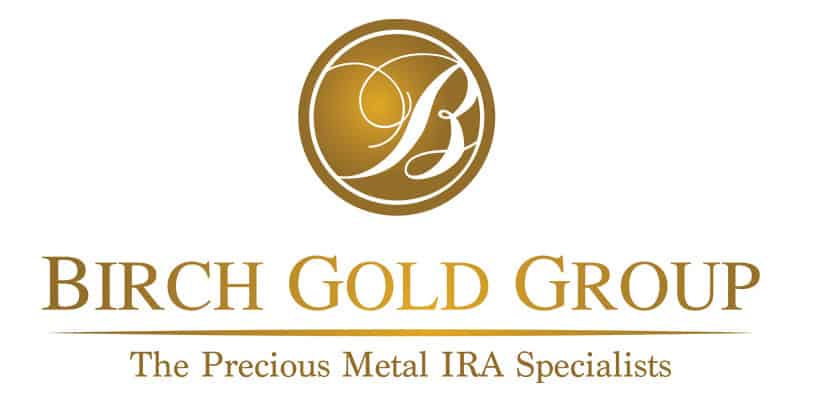
Start A Gold IR With a Minimum Amount of $10,000
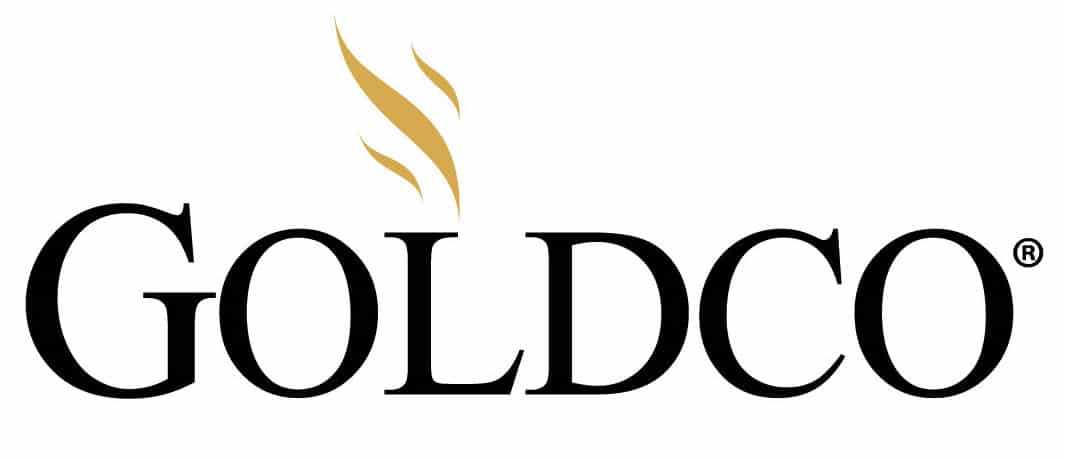
Start A Gold IR With a Minimum Amount of $20,000
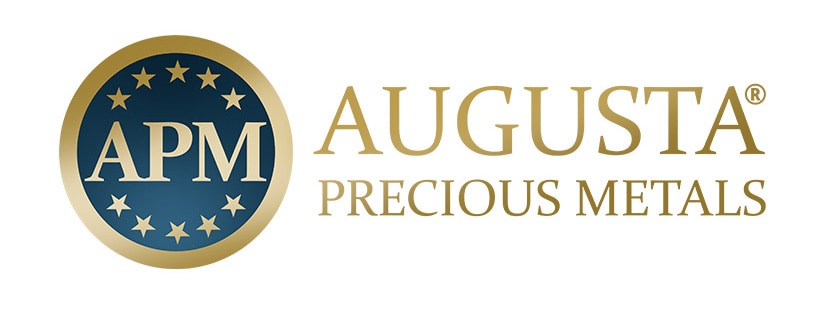
Start A Gold IR With a Minimum Amount of $50,000
Tax implications of investing in Silver IRA
Investing in a Silver IRA is like planting a money tree for your retirement, but it’s important to consider the tax implications before making any moves.
The IRS regulations dictate that when you withdraw funds from your traditional IRA, they are taxed as ordinary income. However, with a Silver IRA, the taxes are deferred until you make withdrawals. This means that if the value of silver increases over time, you could potentially pay less in taxes compared to other investments.
There are also some limitations on how much you can contribute to a Silver IRA each year based on your age and income level. For those under 50 years old, the contribution limit for 2021 is $6,000 per year. If you’re over 50 years old, you can contribute up to $7,000 per year. Additionally, if you have multiple IRAs or retirement accounts, the total amount contributed cannot exceed these limits.
It’s important to note that investing in a Silver IRA does not completely eliminate taxes. When you eventually make withdrawals from your account after retiring, those withdrawals will be taxed at your current tax rate at that time. That being said, by deferring taxes through a Silver IRA and potentially paying less overall due to silver appreciation over time can provide significant benefits for your retirement savings.
Understanding the tax implications of investing in a Silver IRA is vital before making any decisions about this type of investment vehicle. Careful consideration of IRS regulations and contribution limits will help ensure that your investment aligns with your long-term financial goals while minimizing tax liabilities along the way.
Regular portfolio review is essential to ensure that all aspects of an investment strategy remain aligned with personal objectives and changing market conditions over time.
Importance of regular portfolio review
To ensure your retirement savings align with long-term financial goals, it’s important to regularly review your portfolio and make adjustments as needed. This is especially vital during market downturns, when investments may be impacted.
Regularly reviewing your portfolio allows you to evaluate individual investment performance and determine alignment with financial goals. It also provides an opportunity to rebalance the portfolio by adjusting asset allocation based on current values to avoid overexposure to any one asset class, which can increase risk.
In addition, regular reviews can help identify changes in market conditions or economic trends that may impact investment performance. For example, if interest rates are expected to rise, reducing exposure to bonds and increasing exposure to historically successful assets like stocks may be wise.
By regularly reviewing and adjusting investment strategy, long-term success and greater financial security in retirement can be achieved. With this approach, let’s explore the long-term outlook for silver IRA investments.
Long-term outlook for Silver IRA
Looking ahead, the long-term outlook for a silver IRA investment is as bright as a shining star in the night sky. Silver has historically been considered a safe-haven asset and has often outperformed other precious metals during market downturns. This makes it an attractive option for investors looking to diversify their portfolio and mitigate risk.
To further understand the growth potential of a silver IRA, here are some key points to consider:
1. Silver has demonstrated steady growth over the past decade, with an average annual return of 9.6%. This compares favorably to gold, which had an average annual return of 8.2% over the same period.
2. As industrial demand for silver continues to increase, driven by its use in electronics and renewable energy technologies, there is potential for even greater growth in the coming years.
3. Unlike stocks or bonds that can be affected by company-specific risks or macroeconomic factors, silver’s value is tied primarily to supply and demand dynamics in the global market.
4. Finally, owning physical silver through a self-directed IRA can provide added security against inflation and currency devaluation.
Overall, when compared with other precious metals like gold or platinum, silver offers compelling growth potential for long-term investors seeking stability and diversification in their portfolio.
Moving on to frequently asked questions about silver IRAs…
Frequently asked questions about Silver IRA
If you’re considering adding a silver IRA to your investment portfolio, you may have some questions about how it works and whether it’s the right choice for you. One common misconception about silver IRA is that it is not a safe investment during market downturns. However, historical data suggests otherwise. In fact, silver has performed well during economic crises, providing investors with a hedge against inflation and preserving their wealth.
Another benefit of diversification in silver IRA is that it can help reduce overall portfolio risk. By investing in different assets classes such as stocks, bonds, and precious metals like silver, investors can spread out their risk and potentially increase returns over time. Silver can serve as an excellent diversifier because its price movements are generally uncorrelated with those of other asset classes.
Here’s a table that shows the performance of different asset classes during the 2008 financial crisis:
| Asset Class | Performance |
|————-|————-|
| S&P 500 | -37% |
| Gold | 5% |
| Silver | -24% |
| Treasury | 14% |
As you can see from the data above, while both gold and silver experienced losses during the crisis, they fared much better than equities. Additionally, treasuries provided positive returns but were not enough to offset losses in other areas of the portfolio. Therefore, including precious metals like silver in your investment strategy could be a wise decision.
Don’t let misconceptions about silver IRA deter you from exploring this valuable investment option. As shown by historical data and research studies conducted over time periods spanning decades or more; including precious metals such as gold or silver within one’s diversified portfolio has been proven beneficial long term due to their ability act as safe havens when times get tough while also providing protection against inflation which ultimately helps preserve purchasing power over time so take advantage today!
Frequently Asked Questions
What are the fees associated with opening and maintaining a Silver IRA?
If you’re considering opening a silver IRA, it’s important to understand the fees associated with this type of investment.
Typically, there are three types of fees that you’ll encounter: custodial fees, storage fees, and transaction fees.
Custodial fees cover the administrative costs of managing your account and can range from $75 to $250 per year.
Storage fees are charged by the company that stores your precious metals and may vary depending on the amount you invest.
Finally, transaction fees are charged when you buy or sell silver within your IRA. These can range from 1% to 5% of the value of your transaction.
When it comes to investment returns, historical data has shown that silver prices tend to rise during market downturns due to its status as a safe haven asset. However, past performance is not indicative of future results and any investment carries risks.
It’s important to do your own research and consult with a financial advisor before making any decisions about investing in a silver IRA.
Can I transfer funds from an existing IRA or 401(k) into a Silver IRA?
Yes, you can transfer funds from an existing IRA or 401(k) into a silver IRA. The IRA transfer process typically involves filling out paperwork and coordinating with your current custodian and the new custodian to ensure a smooth transfer.
It’s important to note that there may be tax implications for transferring funds, so it’s recommended to consult with a financial advisor before making any moves. Investment diversification is crucial for long-term financial success, and adding silver to your portfolio can provide valuable protection against inflation and market volatility.
Understanding silver market trends is also important in determining the best time to buy or sell within your silver IRA. Overall, incorporating precious metals like silver into your retirement strategy through a self-directed IRA can offer significant benefits for those looking to diversify their investments and protect their wealth over time.
How do I determine the quality and purity of the silver investments in my Silver IRA?
You may be concerned about determining the quality and purity of the silver investments in your silver IRA.
One way to verify the authenticity of your silver is to look for a hallmark stamp, which indicates the manufacturer and purity level.
Additionally, you can request a third-party assay certificate, which confirms the exact weight and purity of your silver investment.
It’s also important to work with a reputable custodian who has strict standards for selecting and storing precious metals.
By taking these steps, you can ensure that your silver investments are genuine and of high quality, which can provide peace of mind as you plan for your financial future.
Are there any restrictions on when I can withdraw funds from my Silver IRA?
If you have a silver IRA, there may be restrictions on when you can withdraw funds without penalty. Early withdrawal penalties typically apply if you take money out before age 59½.
Additionally, taking withdrawals from your IRA may have tax implications that you should consider. It’s important to review the specific terms of your IRA agreement and understand any potential fees or taxes associated with withdrawing funds early.
Keep in mind that these restrictions are in place to encourage long-term savings and growth for retirement, so it’s important to weigh the benefits and drawbacks before making any decisions about withdrawing funds from your silver IRA.
Is there a minimum or maximum amount of silver I can hold in my Silver IRA?
When it comes to the minimum and maximum amount of silver you can hold in your IRA, there are specific rules that apply. The IRS sets a minimum investment requirement for IRAs, which is $5,000.
While there is no limit on the maximum amount of silver you can hold in your IRA, it’s important to keep in mind that diversification is key. Holding too much of any one asset can be risky and potentially lead to losses.
That’s where the benefits of silver IRA diversification come into play. By investing in multiple assets, including silver, you spread out your risk and increase the potential for long-term gains.
So while there may not be a set limit on how much silver you can hold in your IRA, it’s essential to consider diversification as part of your overall investment strategy.
Conclusion
Congratulations, you’ve learned about Silver IRA and its potential benefits as an investment option. While no investment is immune to market downturns, it’s been observed that silver tends to hold its value better than other assets during economic crises.
Historical data shows that silver prices have increased significantly during times of inflation and uncertainty in the economy. It’s important to note that investing in Silver IRA comes with tax implications and requires regular portfolio review to ensure your investments align with your long-term goals.
As the famous adage goes, “Don’t put all your eggs in one basket.”Diversifying your portfolio with a mix of assets can help mitigate risks and increase returns over time.
In summary, a Silver IRA can be a smart addition to your investment strategy. With careful consideration of tax implications and regular portfolio review, it may provide stability and growth for your retirement savings even during uncertain economic times. Remember to always do your research before making any investment decisions.




